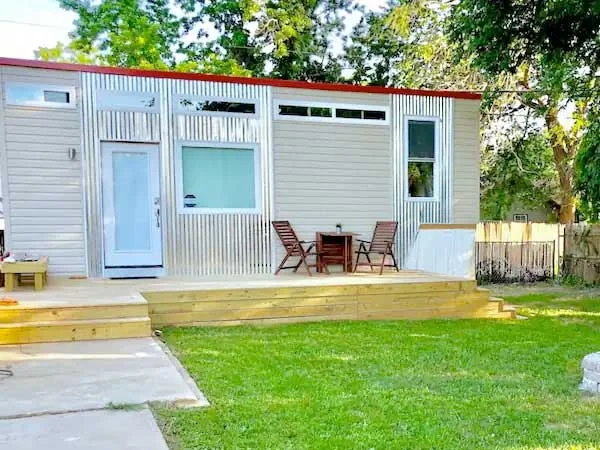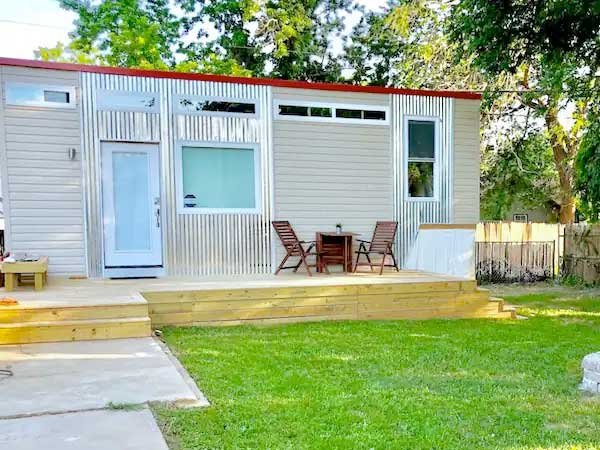Hey there! Have you ever wondered if tiny homes are legal in Oklahoma? Well, today we’ll be diving into this intriguing topic to give you all the details you need. From zoning regulations to building codes, we’ll explore the current status of tiny homes in the great state of Oklahoma. So, if you’ve been dreaming about downsizing and living a simpler life, stay tuned to find out if Oklahoma is the perfect place for your tiny home adventure. Are tiny homes legal in Oklahoma? If you’re considering the charm and simplicity of a tiny home, it’s important to understand the zoning laws, building codes, and regulations that apply in order to make an informed decision. In this comprehensive article, we’ll take a closer look at zoning laws, building codes, minimum square footage requirements, the permitting process, utilities and off-grid living, property taxes, legal challenges, local regulations, and community rules and homeowner associations (HOAs) in Oklahoma. Let’s explore these topics to help you on your journey to owning a tiny home in the Sooner State.
Zoning Laws
Residential Zoning
When it comes to residential zoning in Oklahoma, each municipality and county can establish its own regulations governing land use and property development. It’s important to research the specific zoning requirements for the area where you intend to place your tiny home. Some cities may have specific zoning regulations for accessory dwelling units (ADUs) or tiny homes, while other areas may have more lenient regulations allowing for greater flexibility.
Agricultural Zoning
Agricultural zoning is another consideration for individuals looking to live in a rural or farming environment. Oklahoma has various agricultural zoning classifications aimed at preserving the agricultural industry and ensuring the efficient use of agricultural lands. If you plan to establish your tiny home on agriculturally zoned land, it’s important to understand the specific regulations and requirements associated with this type of zoning.
Rural Zoning
Living in a rural area can offer a peaceful and picturesque setting for your tiny home. Rural zoning regulations typically have more relaxed rules compared to residential or agricultural zoning. However, it’s crucial to check with the local authorities to ensure compliance with any specific requirements or restrictions. Zoning laws play a significant role in determining where you can legally place your tiny home, so understanding the zoning regulations in your desired area is essential.
Building Codes
International Residential Code (IRC)
The International Residential Code (IRC) is a widely adopted set of building codes and standards used throughout the United States. The IRC provides regulations that govern the construction and maintenance of residential buildings. It covers a broad range of aspects, including structural integrity, fire safety, electrical systems, plumbing, mechanical systems, and energy efficiency. Complying with the IRC ensures that your tiny home meets the necessary safety standards and requirements.
Oklahoma Uniform Building Code Commission (OUBCC)
In addition to the IRC, the state of Oklahoma has its own set of building codes and regulations through the Oklahoma Uniform Building Code Commission (OUBCC). The OUBCC establishes and enforces statewide building codes to ensure the health, safety, and welfare of its residents. These codes cover all types of construction projects, including residential buildings. When constructing a tiny home in Oklahoma, it’s important to consult the OUBCC to ensure compliance with the state’s specific building codes.
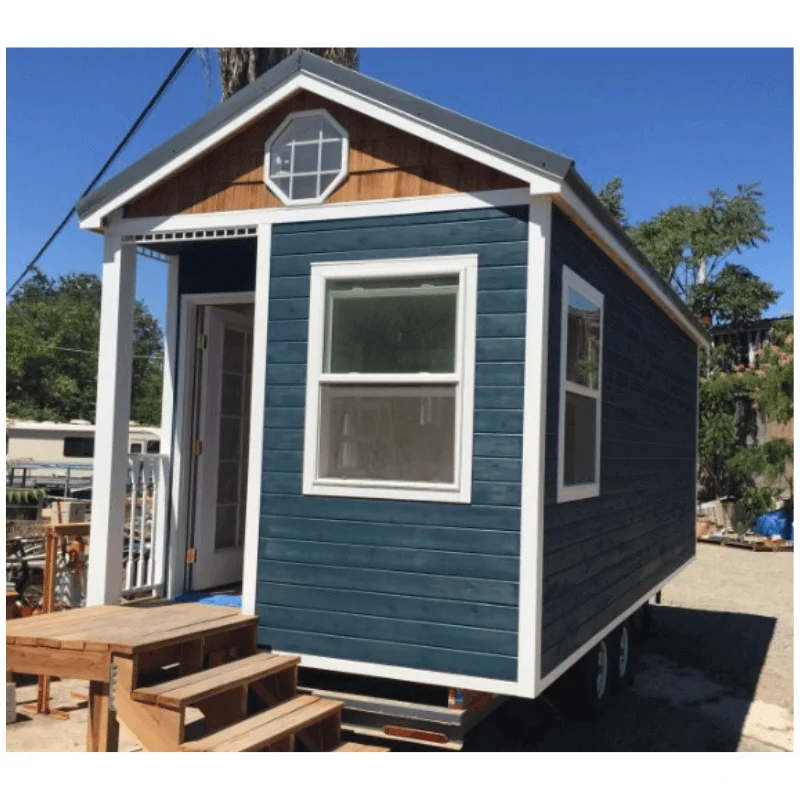
Minimum Square Footage Requirements
Residential Building Requirements
Typically, residential zoning in Oklahoma requires a minimum square footage for habitable dwellings. This minimum square footage can vary depending on the location and local regulations. It’s crucial to review the zoning codes and requirements specific to the area where you plan to build your tiny home. Some jurisdictions may have exceptions or special provisions for smaller dwellings, such as tiny homes, while others may have more rigid minimum size requirements.
Agricultural Building Requirements
If you plan to place your tiny home on agriculturally zoned land, there may be minimum square footage requirements related to agricultural buildings. These requirements aim to ensure that agricultural structures, including dwellings, provide adequate space for farming operations and comply with safety standards. Researching the specific guidelines for agricultural buildings in your desired location will help determine if your tiny home meets the necessary requirements.
RV and Mobile Home Requirements
Tiny homes on wheels (THOWs) are often considered alternative dwellings and can fall into the same category as recreational vehicles (RVs) or mobile homes. Depending on the specific classification of your tiny home, there may be additional regulations and requirements to follow. Familiarize yourself with the RV and mobile home regulations, as set forth by the Department of Transportation (DOT) and any other relevant agencies, to ensure compliance when living in or transporting your tiny home.
Tiny Home on Wheels (THOW)
Recreational Vehicle (RV) Regulations
If your tiny home is classified as a recreational vehicle (RV), it must comply with the regulations set forth by the RV industry. These regulations govern aspects such as size, weight, safety standards, and utility connections. RVs must also comply with zoning and land use regulations when parked or stationed on private property. It’s essential to verify the specific RV regulations in your area to understand if a tiny home on wheels qualifies as an RV and what requirements need to be met.
Department of Transportation (DOT) Guidelines
Transporting your tiny home on wheels from one location to another requires compliance with the guidelines set by the Department of Transportation (DOT). These guidelines cover vehicle dimensions, weight restrictions, safety requirements, and licensing. Consulting the DOT guidelines and obtaining the necessary permits will ensure you are legally able to transport your tiny home on public roads.
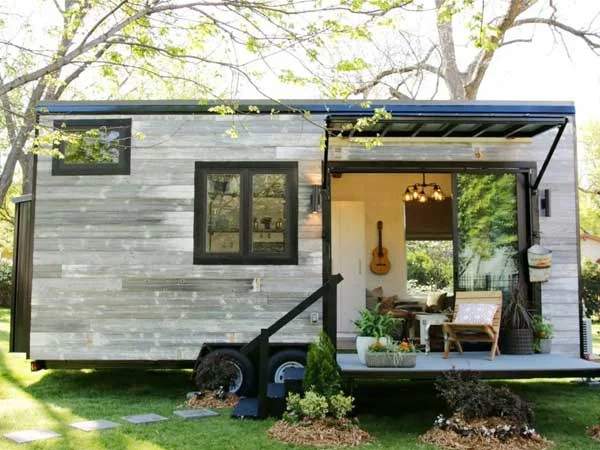
Permitting Process
Local Building Permits
Before constructing or placing a tiny home in Oklahoma, you will likely need to obtain a building permit from the local building department or municipality. Building permits ensure that your structure is designed and constructed in accordance with applicable building codes and regulations. The permitting process typically involves submitting detailed plans and paying a fee. It’s essential to consult with the local building department to obtain the necessary permits and understand the specific requirements for your tiny home project.
State-Level Approvals
In addition to local building permits, there may be state-level approvals required for certain aspects of your tiny home project. These approvals can include electrical permits, plumbing permits, and septic system permits, among others. It’s important to research and adhere to the state-level regulations to ensure compliance and avoid any legal issues.
Inspections
Throughout the construction process, inspections may be required to verify that the construction meets the approved plans and complies with building codes and regulations. Inspections are typically conducted by local building officials at various stages of the construction process. It’s crucial to schedule and pass these inspections to demonstrate that your tiny home is built safely and in accordance with the applicable codes.
Utilities and Off-Grid Living
Access to Public Utilities
One significant consideration when choosing the location for your tiny home is access to public utilities. Many zoning regulations require connecting to public water, sewer, and electrical utilities. Ensure that the location you choose allows for access to these services if you plan on having them connected. Additionally, it’s important to consider the costs associated with connecting to public utilities when determining the feasibility of living in a particular area.
Off-Grid Living Considerations
Off-grid living, where you rely on renewable energy sources and alternative systems, is becoming increasingly popular among tiny home enthusiasts. Oklahoma’s wide-open spaces and renewable energy potential make it an attractive location for off-grid living. However, going off-grid comes with its unique considerations, such as the installation of solar panels, rainwater harvesting systems, composting toilets, and alternative heating sources. It’s essential to research and understand the regulations surrounding off-grid living, including any limitations or requirements for self-sustaining systems.

Property Taxes
Tax Assessments
Owning a tiny home, regardless of its size, may still subject you to property taxes. Property taxes in Oklahoma are typically assessed based on the value of the property and the specific tax rates set by local jurisdictions. It’s important to consult with the local tax assessor’s office to determine how your tiny home will be assessed and what property tax obligations you may have.
Agricultural Exemptions
If your tiny home is located on agriculturally zoned land and you engage in agricultural activities, you may be eligible for agricultural exemptions or special tax programs. These exemptions could reduce your property tax liability. It’s advisable to consult with a tax professional or the local tax assessor’s office to determine if your tiny home qualifies for any agricultural exemptions or tax incentives.
Legal Challenges
Legal Cases
Tiny homes, being a relatively new trend, have presented legal challenges in many jurisdictions. Some communities may have specific regulations that make it challenging to legally reside in a tiny home. However, it’s essential to note that laws and regulations are constantly evolving, and legal challenges may be overcome through community engagement, advocacy efforts, and legal precedents. Research any legal cases relevant to tiny homes in Oklahoma to gain insight into the challenges faced by tiny home enthusiasts and potential solutions.
Advocacy Efforts
Advocacy efforts at the local, state, and national levels play a crucial role in shaping regulations that accommodate the growing interest in tiny homes. Joining local or national advocacy groups or reaching out to policymakers can help promote understanding and acceptance of tiny homes as a viable housing option. Stay informed about advocacy efforts and get involved to contribute to the ongoing conversation about tiny homes in Oklahoma.
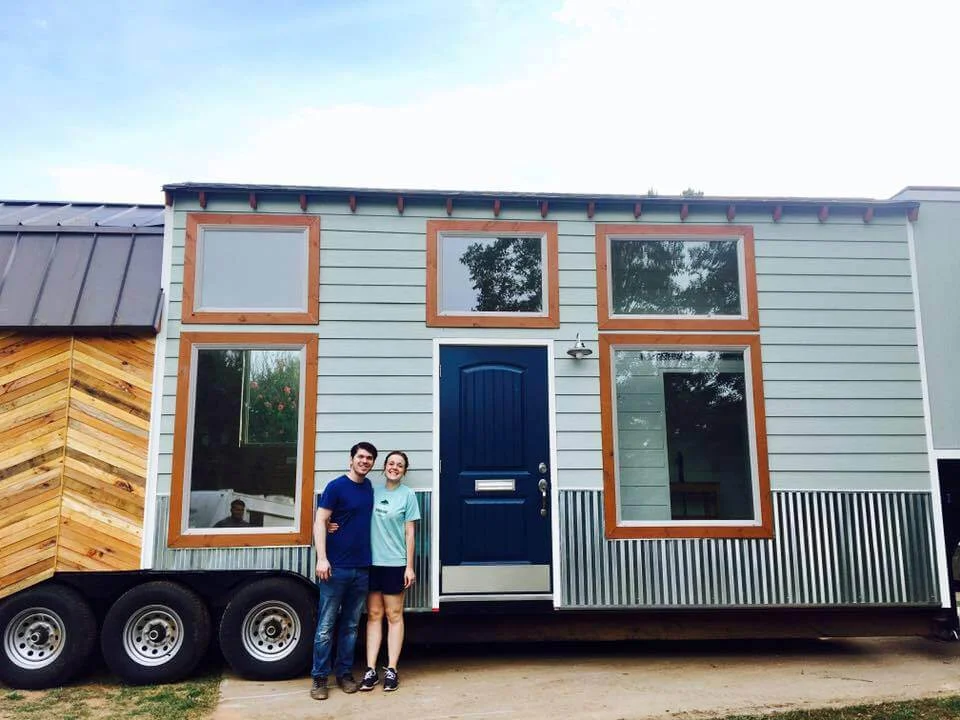
Local Regulations
City-Specific Regulations
In addition to the broader state regulations, municipalities, cities, and towns in Oklahoma can have their own specific regulations regarding tiny homes. These regulations can vary significantly from one city to another, including restrictions on size, design, location, and occupancy. It is essential to review the specific regulations for the city or town where you plan to build your tiny home to ensure compliance and avoid any legal issues or fines.
County-Specific Regulations
Similar to city-specific regulations, counties in Oklahoma may also have their unique regulations governing the construction and placement of tiny homes. It’s essential to research and adhere to the county-specific regulations when planning your tiny home project. Contact the county’s planning and zoning department or consult with a local professional for guidance on county-specific regulations.
Community Rules and HOAs
Homeowners Associations (HOAs)
If you plan to place your tiny home in a community governed by a homeowners association (HOA), it’s important to review the association’s bylaws and regulations. Many HOAs have specific rules regarding the size, design, and appearance of homes within the community. Some HOAs may have restrictions that limit the ability to have a tiny home. It’s crucial to carefully review the HOA’s guidelines and determine if your tiny home aligns with their requirements before purchasing or placing it in an HOA-controlled property.
Community Guidelines
In addition to HOAs, some communities or neighborhoods may have their own guidelines and regulations. These guidelines can cover various aspects, such as architectural styles, home sizes, and landscaping requirements. If you are planning to build or place your tiny home in a specific community, it’s important to familiarize yourself with the community guidelines to ensure compliance and alleviate any potential conflicts with your neighbors.
In conclusion, while owning a tiny home in Oklahoma is an exciting prospect, it’s crucial to navigate the legal landscape effectively. Understanding zoning laws, building codes, minimum square footage requirements, the permitting process, utilities and off-grid living, property taxes, legal challenges, local regulations, and community rules and HOAs is essential to ensure a smooth and lawful journey in tiny home ownership. Remember to research, consult with professionals, and engage with advocacy efforts to stay informed and make the best decisions for your unique situation. Happy tiny home living in the beautiful state of Oklahoma!
